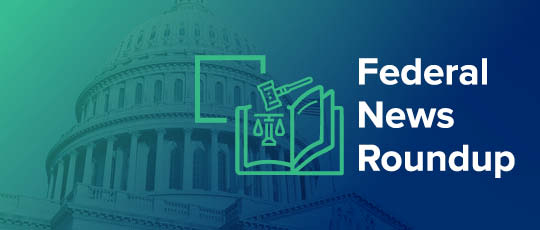For WorldatWork Members
- Modernizing Pharmacy Benefits: A Total Rewards Opportunity, Workspan Daily Plus+ article
- Use This Checklist Toward Modernizing Your Pharmacy Benefits, Workspan Daily Plus+ article
- The Benefits Checkup: Is Your Offering Truly Maximized? Workspan Daily Plus+ article
- Benefits Strategy Guide, tool
- Benefits: KPIs and Business Formulas, tool
For Everyone
- A Prescription for Rising Drug Costs, Workspan Daily article
- Workers Want Pharmacy Benefits with Consumer App-Like Ease, Workspan Daily article
- Employers Showing ‘Growing Appetite for Disruptive’ Benefits Solutions, Workspan Daily article
Healthcare costs will likely soar next year due to weight loss drugs and inflation, according to the 2026 Health Plan Cost Trend Survey by Segal, an HR and benefits consulting firm.
Due to limited providers and a high demand for care, Segal predicted 2026 medical plan costs will increase by 9% over 2025 levels, marking the highest annual projection in more than a decade. This figure is on par with earlier reports from:
- Business Group on Health (9%)
- Mercer (9%)
- WTW (9.1%)
Segal’s annual survey of trend projections represents more than 80% of the commercially insured and self-insured market.
Main Drivers
For 2026, the highest projected rate of increase for health benefit plan cost is expected to be prescription drugs at 11%, mostly due to more plans covering GLP-1 medications.
Segal noted 60% of their clients offer anti-obesity medication (AOM) coverage, in part due to 40% of people under the age of 65 meeting the criteria for obesity. Therefore, some plans are evaluating whether they should cover AOMs (such as glucagon-like peptide-1, or GLP-1), and how to optimize coverage, such as re-evaluating eligibility to manage costs while prioritizing those most in need.
Meanwhile, the primary driver of projected specialty drug cost increases is greater utilization of new high-cost medications replacing lower-cost therapies. Trend attributable to utilization accounts for 62% of the specialty drug gross cost-trend increase before rebates.
“Soaring prescription costs are mostly driven by the preference for expensive GLP-1 medications over cheaper alternatives and lifestyle changes,” said Edward Kaplan, Segal’s national health practice leader. “That creates an expensive challenge for health plans. At the same time, drug manufacturers continue to saturate the market with new high-cost specialty products, so costs aren’t coming down anytime soon.”
Also increasing in cost are hospital stays, surgical procedures and physician services. Segal’s report stated the high demand for care and limited supply of providers has increased the leverage providers have to secure higher reimbursement rates.
The report found hospitals’ price inflation is expected to rise by 5%, and physicians’ price inflation is expected to rise by 2.1%.
Additionally, the largest contributor to healthcare costs is the increased utilization of services for mental health conditions, said the report, which found 37% of Generation Alpha (those born between 2010 and 2024), the largest share of any generation, are seeing a mental health provider. According to Segal, they are increasingly seeing providers for attention-deficit/hyperactivity disorder (ADHD) and autism treatment, in addition to anxiety and depression.
“There’s a sizeable increase in Americans using mental health services, and this has only continued to increase post-COVID,” said Eric Miller, the consulting actuary in the national health consulting and analytics practice at Segal. “This includes a recent rise in treatment for autism, which is attributed to improved diagnostic criteria, greater awareness, enhanced insurance coverage and increased provider availability.”
Managing Costs
Segal experts offer the following cost-management strategies to address rising healthcare costs:
- Implement drug plan design strategies. Prescription drug costs can be controlled by adopting a custom drug formulary that prioritizes the less expensive options such as biosimilars and generics. Institute pharmaceutical benefit manager (PBM) auditing and copayment maximization to help with managing drug costs.
- Take advantage of technology. Use the latest technologies to detect fraud such as duplicate claims or a wave of similar claims generated by the same provider. Technology also can help streamline claims processing. Consider implementing a telehealth program as a more affordable way to manage common health issues such as behavioral health, diabetes, hypertension and obesity. Also, consider using artificial intelligence (AI) to enhance participant communications.
- Shop in-network. Explore ways to optimize utilization to high-quality and lower-cost providers, direct-contract with key providers, or explore risk-sharing.
- Demand network risk-sharing performance guarantees. During requests for proposals (RFPs) or contract renewal, insist that your medical network provider put a portion of their fees at risk for meeting target cost, utilization or clinical goals.
- Offer onsite clinics. A worksite health center can direct care to the right specialists, point solution programs and centers of excellence. A well-operated clinic can reduce visits to the emergency room, urgent care and specialists, and may increase return on investment (ROI).
Editor’s Note: Additional Content
For more information and resources related to this article, see the pages below, which offer quick access to all WorldatWork content on these topics:
#1 Total Rewards & Comp Newsletter
Subscribe to Workspan Weekly and always get the latest news on compensation and Total Rewards delivered directly to you. Never miss another update on the newest regulations, court decisions, state laws and trends in the field.








